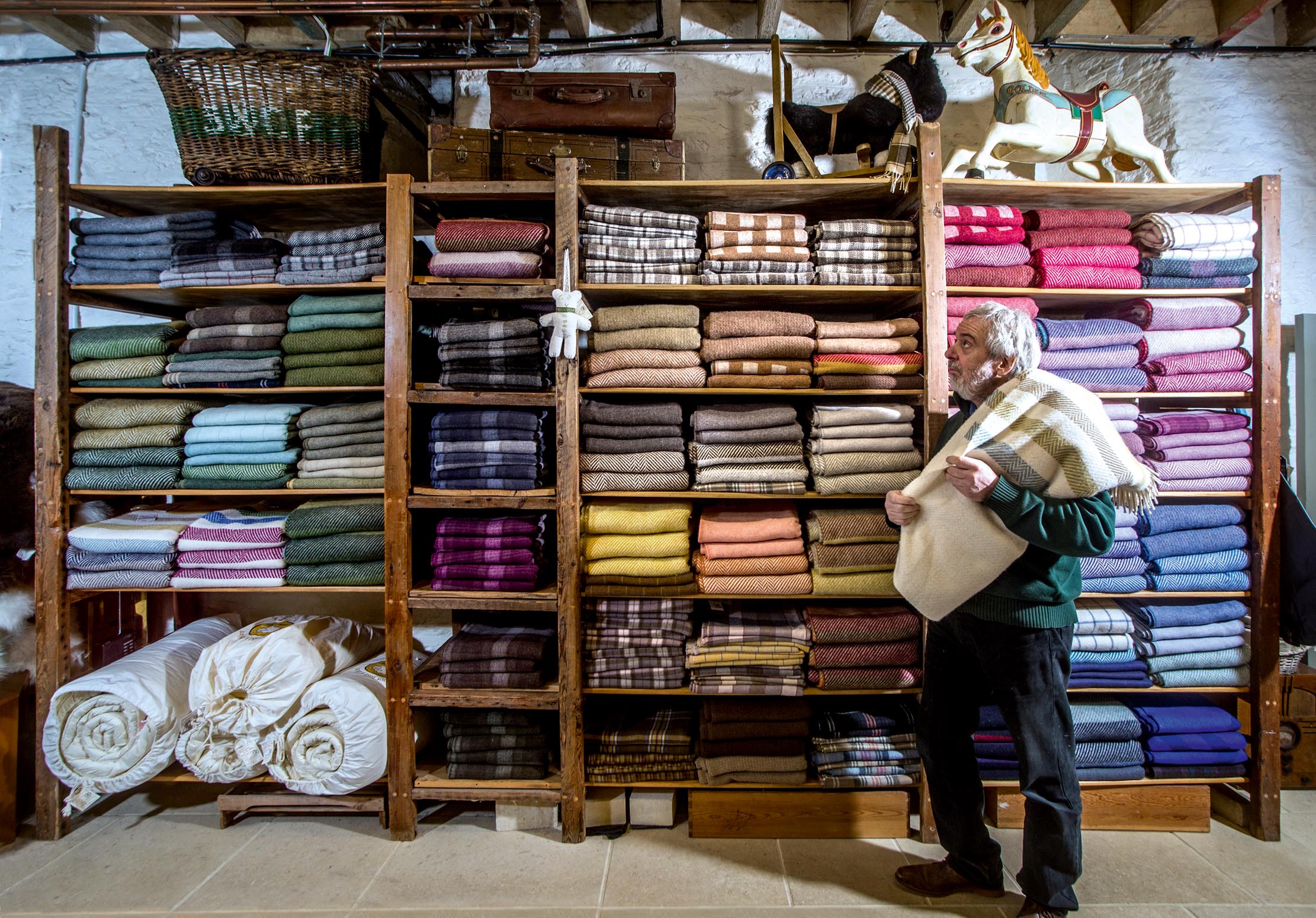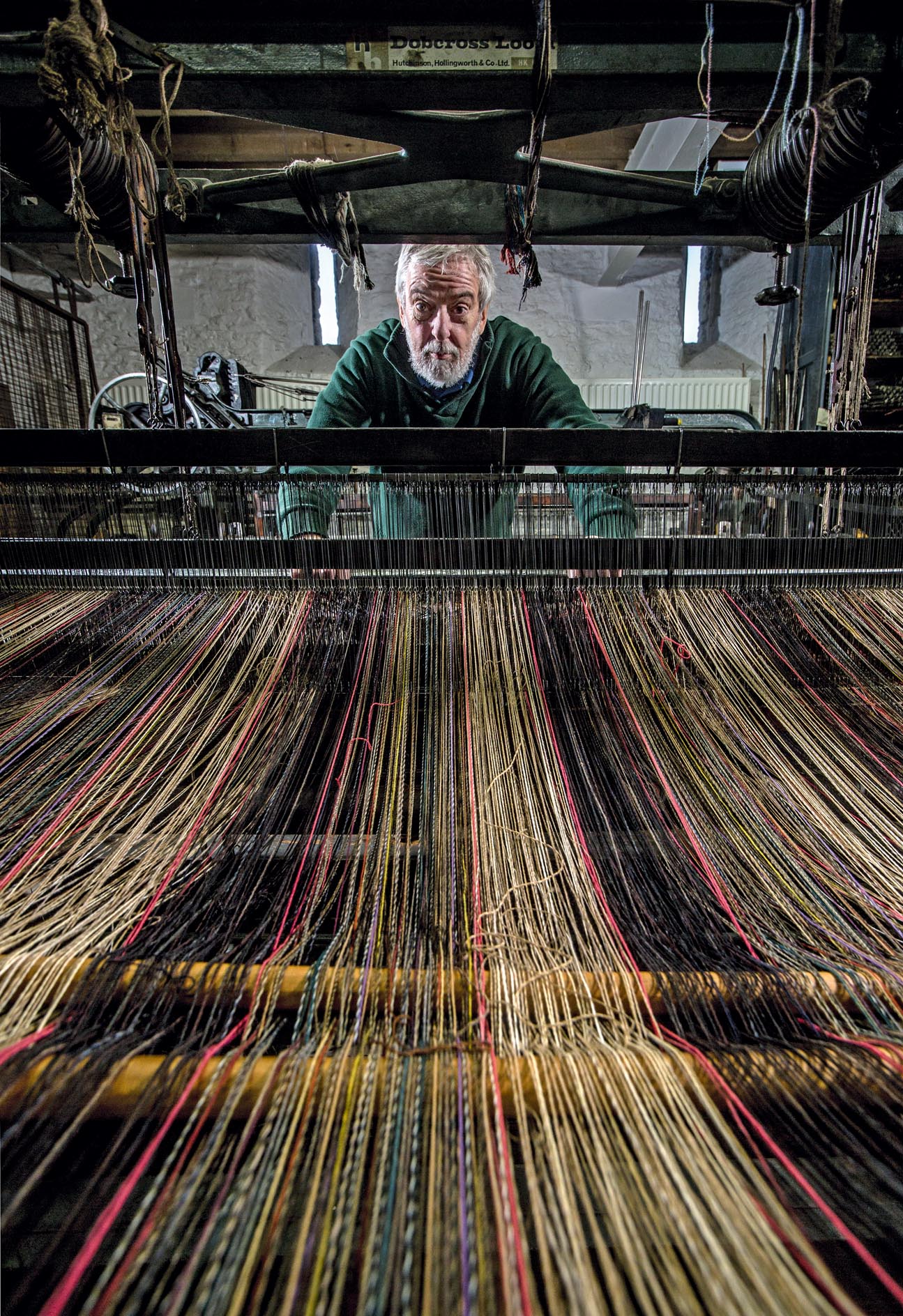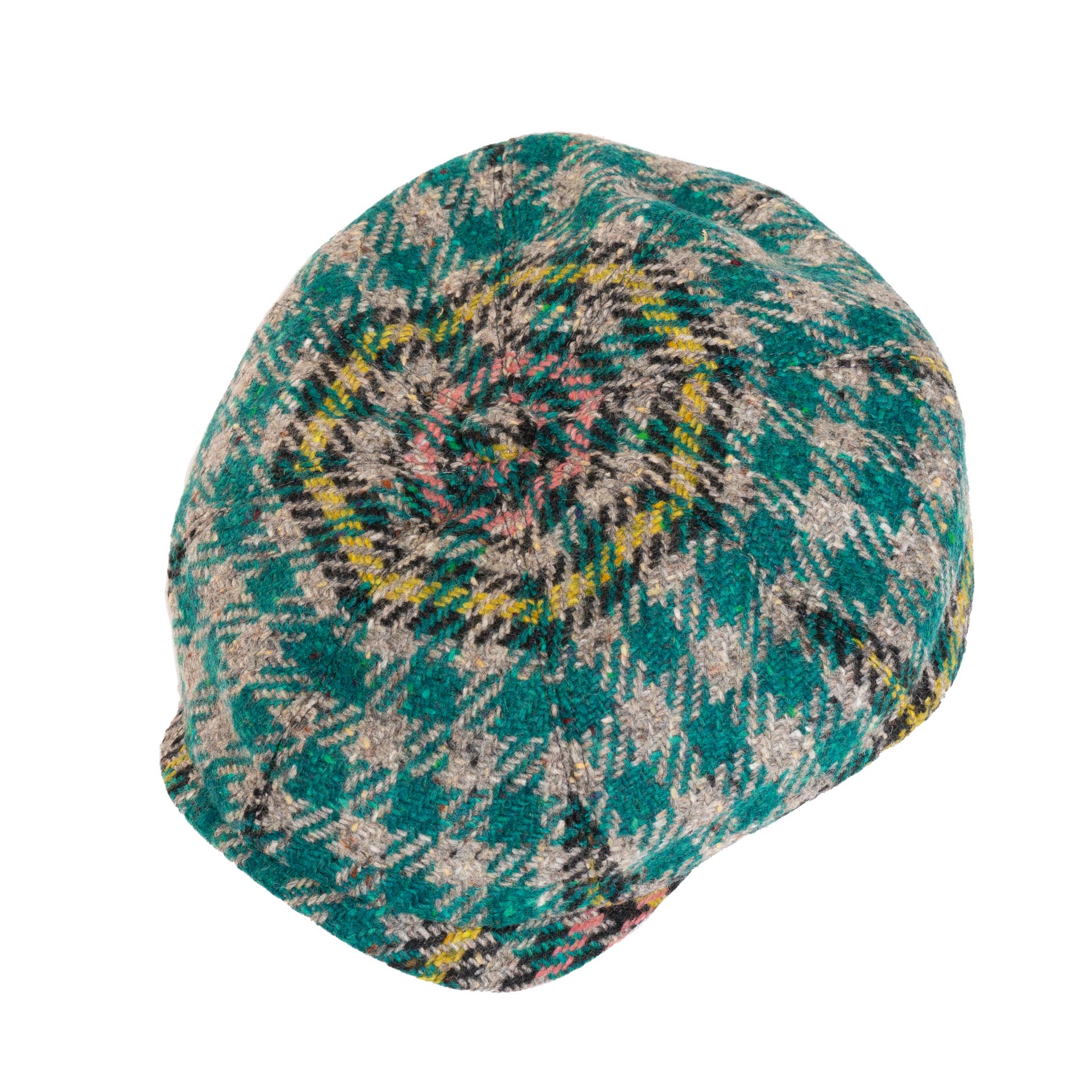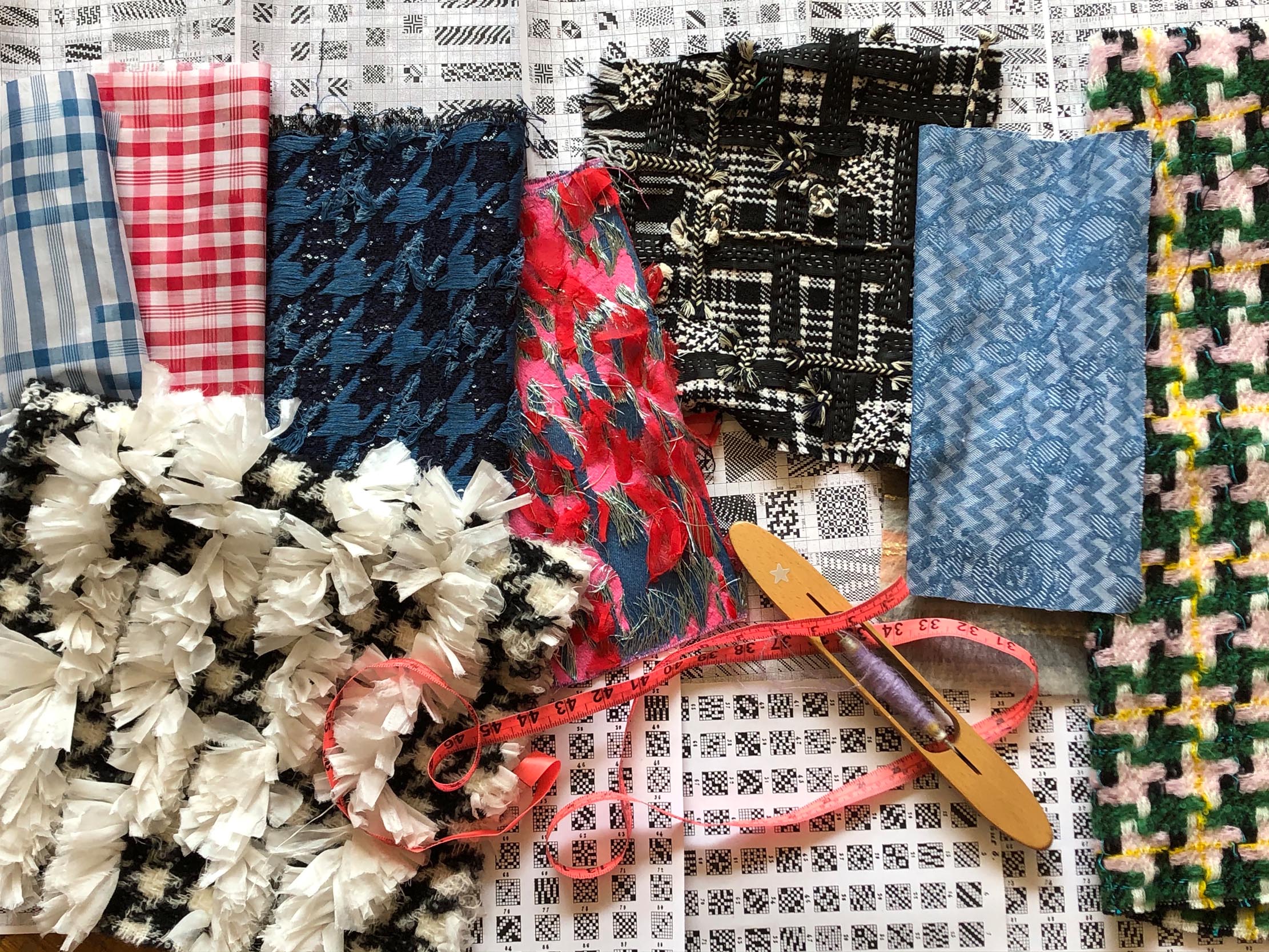English Tweed: The cloth made 'to look like grandpa wore it, but to feel like butter'
You might think tweed, named for the Scottish pronunciation of ‘twill’, is only made north of the border. Not so, says Mary Miers, who finds English makers are becoming a force to be reckoned with. Photographs by Mark Williamson.


The Duke of Sutherland, so Hardy Amies recalled, used to drive south from the Highlands in a brown Rolls-Royce upholstered with tweed, stopping en route to switch into his black, leather-upholstered, ‘town’ Rolls-Royce to continue his journey to London.
The image of tweed as a country cloth derives from its traditional use for sportswear. Estate tweeds developed for shooting and stalking as camouflage for the hill, with a reputation for being tough-wearing and weatherproof. They were woven from the thicker, native wools long used by Scottish and north-country mills, which gave tweed its image of being a rough, coarse-textured cloth.
However, says textile manufacturer and merchant Richard Martin, ‘tweed is a perception more than anything else. It’s hard to define because there’s no technical definition. Any twill (cloth with a diagonal patterned structure), woven using carded — as opposed to combed (worsted) — wool, can be called a tweed’. The word is said to be a corruption of ‘twill’, pronounced ‘tweel’ by a Scots merchant, whose English buyer misheard him and assumed his cloth was named after the famous river.
Guy Hills, founder and creative director of Dashing Tweeds, became fascinated by the history of tweed in men’s clothing when working as a photographer on Savile Row. ‘Poring over ledgers of swatches, I found that, contrary to the assumption that tweeds were always sludge browns and greens, the colours in about the 1860s were bonkers. Tweed, worn for golf, racing, motoring and cycling, as well as for shooting and fishing, became the acceptable way for men to wear colour.’
Its popularity as leisurewear, combined with the import of cheaper merino lambswools from Australia, stimulated production of the softer, more luxurious cloths associated with the West Country, close to the port of Bristol. These, in turn, influenced high-end fashion: a man could now cut a dash in a tweed suit that was both elegant and practical. Women’s couturiers adopted the cloth and from their designs grew the fashion for ‘fancy’ tweeds that is seeing such a revival today.

Several of the designer-weavers I spoke to credited a love of history — as well as old machines — as their guiding inspiration. Mr Martin was destined to become a chemical engineer, but, in 1976, he moved to Wales, where his family had bought a disused mill: ‘I taught myself how to work the machinery and simply got on with it,’ he says, adding that he used a job teaching weaving at the local art college to learn all about textiles. In 1982, he acquired a complex of disused farm buildings near Burford, Oxfordshire, and set up Cotswold Woollen Weavers, which, true to his entrepreneurial flair, has evolved into an idiosyncratic retail outlet.
Over tea in the book-lined threshing barn that is now his office, he treats me to a lucid romp through the English wool and textile industries, from medieval to modern times. A tour takes in a collection of old Dobcross looms and a trove of textile sample books dating back to the 1840s, rescued from a Victorian mill. ‘Our buyers can’t get enough of them; they’re obsessed with “heritage”.’ He credits one client, Ralph Lauren, with reinventing tweed ‘to look like grandpa wore it, but to feel like butter. He had a huge influence on my own designs,’ admits Mr Martin, whose new Gloucestershire Check celebrates the county’s long history of woollen cloth-making in shades evocative of the Cotswold landscape. ‘It’s a West of England Cloth — that is, it uses fine yarns, but packed tightly together for extra weight, so it’s both resilient and soft.’
Exquisite houses, the beauty of Nature, and how to get the most from your life, straight to your inbox.
After buying Marling and Evans, a mill founded in 1570 that had gone out of business, Mr Martin moved his production north — ‘the West Riding is still where all the best infrastructure exists for making English woollen textiles’. With most mills now specialising in one part of the process, he outsources the finishing. ‘It’s said in the trade that a cloth is “made in the finish”. I can take a carded cloth out of the loom and produce several different fabrics from it, depending on how it’s scoured (washed), milled (shrunk) and raised (brushed).’
A rare survival of a ‘vertical’ mill is Linton Tweeds in Carlisle, which was founded by William Linton in 1912 and continues to operate every stage of the process in-house. Now run by a third generation of the Walker family, the company still makes some traditional cloth, but, since the 1960s, has specialised in the production of ‘fancy’ tweeds for the international fashion industry. Best known among its clients is Chanel, with which it has a long and ongoing relationship, having woven tweeds for Coco Chanel’s first collections in the 1920s.

In the Ware Room, Irene Steele and Orla Bailie-Blackett show me some new patterns they have designed digitally. They weave small lengths on a sample loom and send swatches across the world — a large board charts which customer has selected what and from where. ‘It’s important we don’t sell a pattern to two firms in the same country,’ Mrs Steele notes. ‘They can be quite competitive and very protective as to where they source their fabrics.’
The designers have to create two annual collections two years in advance and also take on specialist jobs. They show me a 1980s jacket that has inspired one of their client’s new designs; Lintons has been commissioned to replicate the original tweed. ‘A lot of the fashion houses are delving into their archives and remaking garments in response to the trend for high-end vintage,’ reveals Mrs Steele.
Donning earplugs, we enter the Winding and Twisting Sheds, with their ranks of rattling machines, spinning bobbins and long skeins being twisted into new, double-ply yarns. Lintons re-dyes some of these before weaving, so the Dye House has cages full of cones of thread waiting to be coloured, as well as cloth-dyeing machines. In the Weaving Shed, 50-metre (165ft) warp lengths are spun onto vast barrels, from which they are threaded onto hydraulic power looms. Up to 12 different yarns are used in the weft and the fancier ones, which often incorporate tiny loops or flags, break easily, so weaving times are much slower than at other mills. More exotic threads, with names such as Casino, Crazy Wool and Big Flame, are housed in the Yarn Store; 30 more tons are stored off site.
After washing and drying on huge conveyor belts, the cloth goes to the Darning Room, where hours are spent mending every tiny fault by hand. Then it’s steamed, finished (to add texture) and given a final inspection, before being baled and dispatched — some 53 tons were shipped in 2021.
Japan is a growing market for these creative English tweeds. ‘The great thing about the Japanese is they appreciate good design,’ says Mr Hills, who set up Dashing Tweeds because he couldn’t find any interesting men’s clothes. His innovative designs — one range inspired by the urban landscape, another by outer space — combine wool with high-tech fibres and are woven at various mills. Some of the cloth is made into bespoke garments, some into modern versions of traditional sportswear that he sells in his London shop.
His tweeds are designed in collaboration with co-founder Kirsty McDougall, who now runs a woven-textile design studio in Hastings, East Sussex. Describing her approach as ‘expressive and painterly’, she uses multiple techniques and materials to create sample designs for international fashion and interior brands, and bespoke tweeds for top couturiers such as Givenchy. Many of these contain delicate inlays, even beads and feathers, so are hand-woven in the studio. She also experiments with three-dimensional patterns on a small jacquard loom and has them woven by Sudbury Silk Mills in Suffolk.

Through the Reweave initiative, the studio is working with big fashion houses and mills to transform waste material into exciting new textiles. A rail of experimental swatches includes a five-coloured plastic weave; a novelty design using ribbon, shredded wool cloth and gingham; and a black-and-white sample woven from net and fringing.
All the designers mentioned the current vogue for recycled fabrics and the irony is not lost on them. For, as anyone in the business knows, the textile industry has been re-using waste for centuries. The difference today is that cloth made with recycled fabric has a premium over cloth labelled ‘pure new wool’.
Mary Miers is a hugely experienced writer on art and architecture, and a former Fine Arts Editor of Country Life. Mary joined the team after running Scotland’s Buildings at Risk Register. She lived in 15 different homes across several countries while she was growing up, and for a while commuted to London from Scotland each week. She is also the author of seven books.
